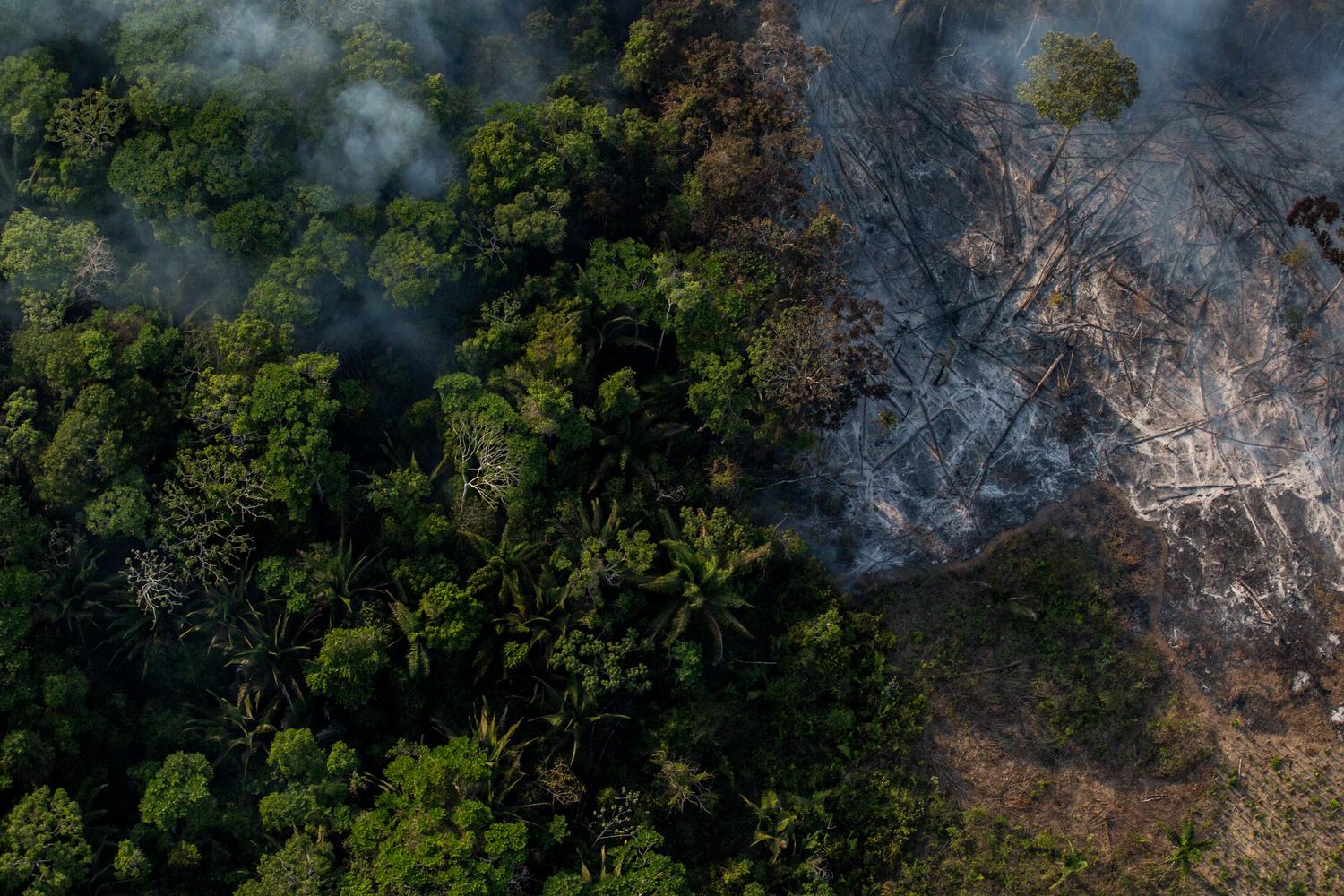One in 10 of the world’s species live in the Amazon.
But a surge in deforestation in recent years is pushing this rainforest closer to a tipping point after which it will lose the ability to generate rainfall, gradually transforming into a dry savanna. Exacerbating the problem: Each year, farmers clear vast swaths of the forest and set fire to the land to prepare it for new crops.
And as conditions turn drier and hotter, these fires are becoming more severe — burning through habitats that support the Amazon’s vast biodiversity.
For the first time, scientists have quantified the impact these fires have had on animals and plants in the Amazon over the past two decades. And according to their new study published today in Nature, these species are suffering — but there is still time to protect them.
In an interview with Conservation News, Patrick Roehrdanz, a Conservation International scientist and co-author of the study, discussed the link between deforestation and fires, the importance of the Amazon’s flora and fauna, and the strategies that could help conserve them.
Question: What were the main takeaways from your research?
Answer: We found that while the frequency of fires has varied over the past 20 years due to droughts and deforestation, these blazes have had a devastating cumulative effect on biodiversity in the Amazon. Using remote-sensing data and satellite images, we studied the impact of fires and deforestation on more than 11,000 plant and 3,000 vertebrate species. We found that more than 10.3 million hectares (25.4 million acres) of Amazon rainforest have been degraded by fires since 2001, affecting the habitats of over 77 percent of all threatened species in this region, including white-cheeked howler monkeys, giant anteaters and hoatzin birds — a unique species that is born with claws on its wings.
In the short-term, the fires destroy trees and plants that are essential to a functioning rainforest, while potentially driving local extinctions. And there are long-term impacts that can arise once the fires subside: The scorched lands thwart natural forest growth, and the clearing of the forest facilitates the spread of invasive species.
Q: Why is the Amazon’s biodiversity so important?
A: The Amazon is the most biodiverse ecosystem on the planet. Many species are native only to this region and provide a variety of benefits for humanity. For example, certain plants are used in traditional medicines and have supported the development of pharmaceuticals used to treat type II diabetes and Alzheimer's disease, among other ailments. Wildlife in this region supports livelihoods and food security for local communities. Trees and plants also play a crucial role in helping absorb carbon emissions, with forests storing millions of tons of carbon each year. But this could change if deforestation and fires continue at their current pace.
Q: What is the link between fires, deforestation and climate change?
A: Fires are not a natural part of the Amazon ecosystem. They are often set by people to expand soy farms or rangelands for cattle. If enough trees are lost, the forest could lose its ability to generate rainfall — making the region drier and more likely to catch fire. Our data shows that the cumulative impacts are mounting for individual Amazonian species, further destabilizing the region’s ecology.
Deforestation also releases carbon emissions, which can fuel climate change. In turn, climate change is driving even hotter and drier conditions in the Amazon, transforming it into a tinderbox. It’s essentially one big feedback loop.
Q: So how do we stop this cycle and protect Amazonian biodiversity?
A: Since the majority of fires in the Amazon are intentionally set by people, preventing them is largely within our control. One way to do this is by recommitting to strong anti-deforestation policies in Brazil, combined with incentives to protect the forest — and replicating those policies in other Amazonian countries. Policies to protect Amazonian biodiversity should include the formal recognition of Indigenous lands, which encompass more than one-third of the Amazon region. Overall, lands that are owned, used or occupied by Indigenous peoples show less species decline and pollution, and better-managed natural resources, research shows.
It is also possible to restore some of the areas in the Amazon that have been degraded and build new habitats for species. For example, in the Xingu region of northern Brazil, farmers are working with local communities to restore their forests through a traditional restoration technique called “muvuca” — in which they sow a large and varied mixture of seeds that yield plants native to the area, such as cashew and açaí. With support from Conservation International, these communities have already helped plant enough seeds to yield more than 1.8 million trees, which has had a range of positive impacts on the region, from better water quality to more diverse native forests.
Kiley Price is the staff writer and news editor at Conservation International. Want to read more stories like this? Sign up for email updates. Donate to Conservation International.
Cover image: Fires in the Amazon in 2015, Brazil (© Flavio Forner)
Further reading:
